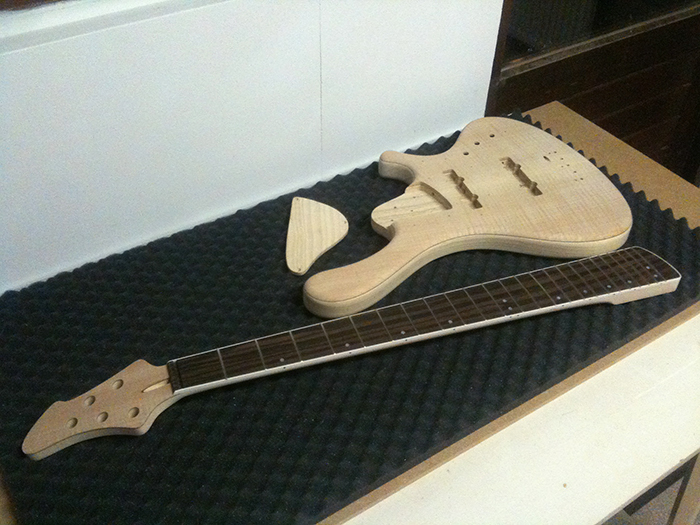First, I checked the neck profile, decided I didn’t like it and started carving again! I concentrated almost completely on the treble side of the neck and carved it in a much tighter curve. It’s not really slim now, but about average I guess. The bass side was left almost untouched, because I felt it’s nice the way it was and I like the asymmetrical shape that emerged while doing so. This way, the neck is still of a regular thickness, not being too thin for a fiver, but it also has a more slim feel; it’s mainly the treble side that determines the playability of the neck.
Secondly I routed some small channels within the pickup cavities for the wiring to go in. They’re not very deep and the wires are rather thick (it’s shielded wiring the Delano pickups come with), so it didn’t help all that much, but it’s a small improvement anyhow.
Then, I started sanding the entire bass. Because the body was sanded quite a while ago, the wood darkened and the local spots that were sanded while working on some details later on created an uneven tint. So I started with 120 grit again and worked my way up to 240 for the body and 320 for the neck. The hard rock maple of the neck already feels silky smooothhh after some tender love and care with the 320 grit sandpaper. The body and headstock face need to be sanded again rather drastically after the black stain, so I do not see any reason to go any further than 240 grit right now.
After sanding and dusting the bass off I placed the parts on convoluted foam to prevent the parts from scratching / damaging while waiting for their finish to go on.


